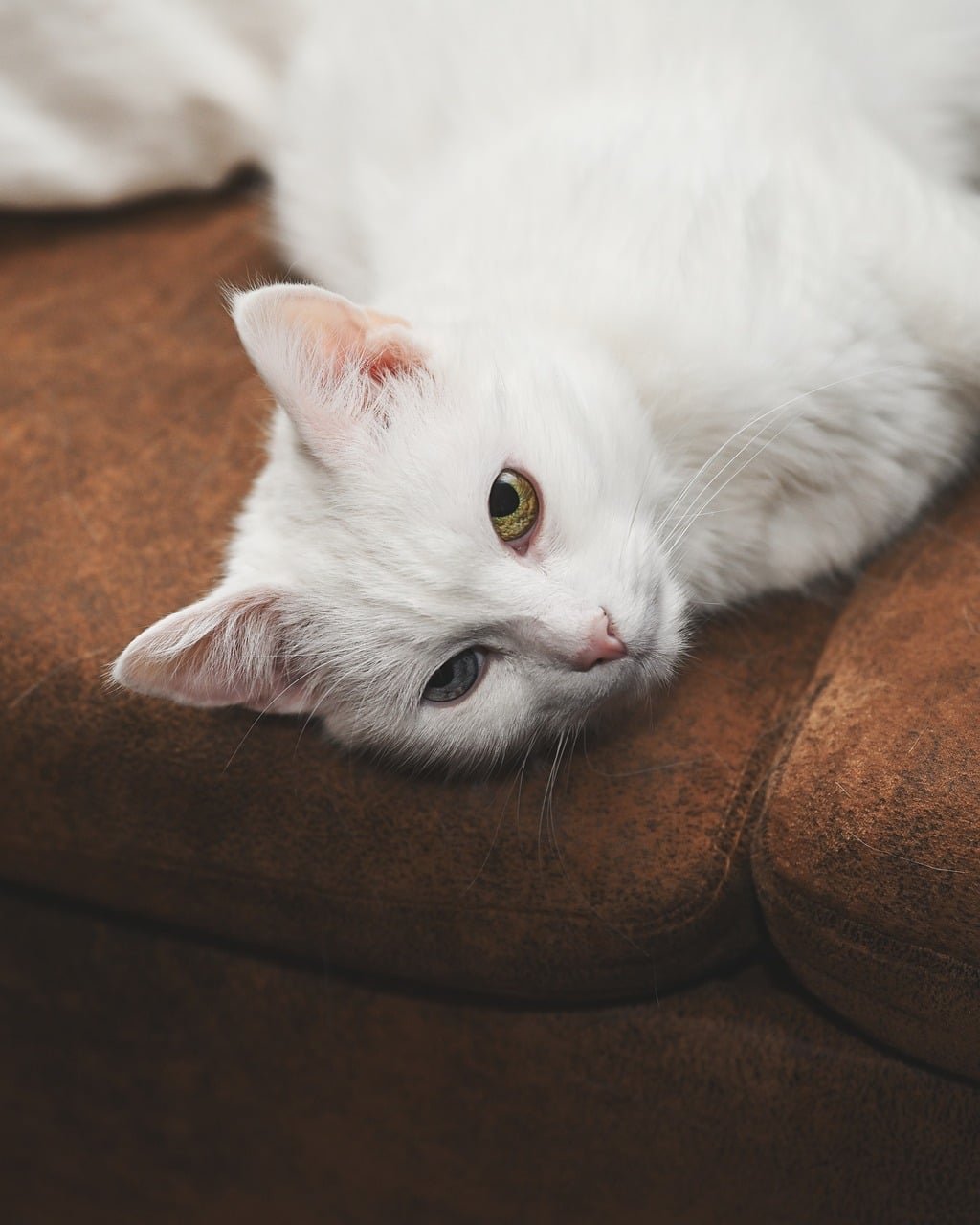Cats are intriguing creatures, and their whiskers, or vibrissae, are one of their most distinctive and essential features. These long, stiff hairs are not just for show; they serve crucial roles in a cat’s sensory perception and navigation. This article delves into the anatomy, function, and significance of whiskers, explaining what type of hair they are and why they are vital to a cat’s well-being.
The Anatomy of Whiskers: More Than Just Hairs
Whiskers, scientifically known as vibrissae, are specialized hairs found on various parts of a cat’s body. They are thicker, more deeply rooted, and highly sensitive compared to regular fur.
Key Characteristics of Whiskers:
- Length and Thickness: Whiskers are generally two to three times thicker than regular fur and can be as long as a cat’s body is wide.
- Root Depth: The roots of whiskers are embedded three times deeper in the skin than regular hair follicles.
- Blood Sinuses: Each whisker follicle is surrounded by a rich blood supply and nerve endings, making them highly sensitive to touch and vibration.
- Location: Whiskers are primarily located on the muzzle but can also be found above the eyes, on the chin, and on the back of the forelegs.
The Function of Whiskers: Beyond Aesthetic Appeal
Whiskers play a vital role in a cat’s sensory perception and interaction with the environment. They are not just decorative; they are essential tools for survival and navigation.
Primary Functions of Whiskers:
- Tactile Sensation: Whiskers can detect even the slightest changes in the environment, such as air currents and vibrations. This helps cats sense the presence of nearby objects and potential dangers.
- Spatial Awareness: The length of a cat’s whiskers typically matches the width of its body, allowing it to gauge whether it can fit through narrow spaces without getting stuck.
- Hunting and Navigation: Whiskers help cats hunt by sensing the movements of prey and navigating through dark or cluttered environments.
- Communication: Whiskers can also convey a cat’s emotions. For example, forward-facing whiskers indicate curiosity or aggression, while whiskers pulled back suggest fear or relaxation.
The Types of Hair in Cats: Differentiating Whiskers from Fur
Understanding the distinction between whiskers and other types of hair is crucial to appreciate their unique functions and importance.
Types of Hair in Cats:
- Guard Hairs: These are the outermost layer of a cat’s coat, providing protection against the elements and giving the coat its color.
- Awn Hairs: Found beneath the guard hairs, these hairs provide insulation and contribute to the coat’s texture.
- Down Hairs: The soft, fluffy hairs closest to the skin that provide warmth and insulation.
- Whiskers (Vibrissae): Unlike the other types of hair, whiskers are sensory organs deeply embedded in the skin and surrounded by nerve endings and blood vessels.
The Science Behind Whisker Sensitivity
Whiskers are incredibly sensitive due to the dense concentration of nerve endings at their base. This sensitivity allows cats to detect minute changes in their environment and respond accordingly.
How Whisker Sensitivity Works:
- Mechanical Receptors: The follicles of whiskers contain mechanoreceptors that respond to mechanical pressure or distortion.
- Signal Transmission: When a whisker touches an object or experiences a change in air currents, these mechanoreceptors send signals to the cat’s brain, providing detailed information about its surroundings.
- Reflex Actions: The high sensitivity of whiskers can trigger reflex actions, such as blinking or head movements, to protect the cat from potential threats.
The Importance of Whisker Care
Given their crucial role in a cat’s sensory system, it is essential to ensure that whiskers are well cared for and not subjected to unnecessary stress or damage.
Tips for Whisker Care:
- Avoid Trimming: Never trim a cat’s whiskers. Cutting whiskers can disorient a cat and impair its ability to navigate and sense its environment.
- Provide Space: Ensure that your cat’s living environment allows enough space for free movement without constant contact with objects that might stress the whiskers.
- Gentle Handling: Be gentle when petting or handling your cat’s face to avoid causing discomfort or damaging the whiskers.
- Whisker-Friendly Bowls: Use shallow, wide bowls for food and water to prevent “whisker fatigue,” which occurs when whiskers repeatedly touch the sides of deep or narrow bowls.
The Phenomenon of Whisker Fatigue
Whisker fatigue is a condition where cats become stressed or overstimulated due to excessive contact with their sensitive whiskers.
Understanding Whisker Fatigue:
- Symptoms: Cats may show signs of whisker fatigue by pawing at their food, eating less, or acting irritable around their food and water bowls.
- Causes: Repeated contact with narrow or deep bowls can overstimulate the sensitive nerves in whiskers, leading to discomfort.
- Solutions: Switching to shallow, wide bowls can help alleviate whisker fatigue and make eating and drinking more comfortable for your cat.
Common Myths and Misconceptions About Whiskers
There are several myths and misconceptions about cat whiskers that can lead to misunderstandings about their function and importance.
Debunking Whisker Myths:
- Myth: Whiskers Are Just Long Hairs: While whiskers are a type of hair, they are highly specialized and serve critical sensory functions.
- Myth: It’s Okay to Trim Whiskers: Trimming whiskers can disorient a cat and impair its ability to navigate and sense its environment effectively.
- Myth: Whisker Color Matters: The color of a cat’s whiskers does not affect their function. Whiskers can be white, black, or even multi-colored depending on the cat’s genetics.
The Lifespan of Whiskers
Like other hairs, whiskers go through growth, shedding, and regrowth cycles. Understanding this natural process can help pet owners better care for their cats.
Whisker Growth Cycle:
- Anagen Phase: This is the active growth phase where new whiskers develop.
- Catagen Phase: The transitional phase where growth slows down, and the follicle prepares for the resting phase.
- Telogen Phase: The resting phase where the whisker remains in place until it naturally sheds and is replaced by a new one.
Observing Whisker Behavior for Cat Well-Being
Paying attention to your cat’s whiskers and their behavior can provide valuable insights into their well-being and emotional state.
Whisker-Related Behaviors to Watch:
- Forward-Facing Whiskers: Indicate curiosity or focus. This position is often seen when a cat is exploring or hunting.
- Relaxed Whiskers: Indicate a calm and content state. This is the most common position when a cat is at rest.
- Pulled-Back Whiskers: Indicate fear, stress, or aggression. Cats may pull their whiskers back when they feel threatened or anxious.
When to Consult a Veterinarian
While whisker loss or changes in behavior are usually not cause for concern, there are times when you should consult a veterinarian.
When to Seek Veterinary Advice:
- Excessive Whisker Loss: If your cat is losing multiple whiskers at once or over a short period, it could indicate an underlying health issue.
- Skin Issues: Redness, swelling, sores, or other abnormalities around the whisker area.
- Behavioral Changes: Increased scratching, rubbing, or other signs of discomfort.
- Overall Health Changes: Weight loss, changes in appetite, lethargy, or other health concerns.
Conclusion
Whiskers are an essential part of a cat’s anatomy, playing crucial roles in sensory perception, navigation, and communication. Understanding what type of hair whiskers are and their importance can help pet owners provide better care and ensure their cats’ well-being. By paying attention to whisker health and behavior, you can gain valuable insights into your cat’s physical and emotional state, allowing you to create a supportive and nurturing environment for your feline friend.
- Cat Whisker Fell Out: Causes, Implications, and What to Do Next
- What Determines Cat Whisker Length?
- What Does It Mean When a Cat Loses a Whisker?
- What Does It Mean When You Find a Cat Whisker?
- What Is Cat Whisker Fatigue?
- How to Tell If Your Cat Has Whisker Fatigue
- What Type of Hair is a Whisker on a Cat?
- Why Does My Cat Have One White Whisker?
- Why Does My Orange Cat Have a Black Whisker?
- Does It Hurt When a Cat Loses a Whisker?
- What Happens If a Cat Loses a Whisker?
- Why Did My Cat Lose a Whisker? Understanding the Causes and Significance
- Why Does My Cat Have One Black Whisker?
- Cat Whisker Fell Out: Causes, Implications, and What to Do Next
Discover more from EMMOCEB
Subscribe to get the latest posts sent to your email.






